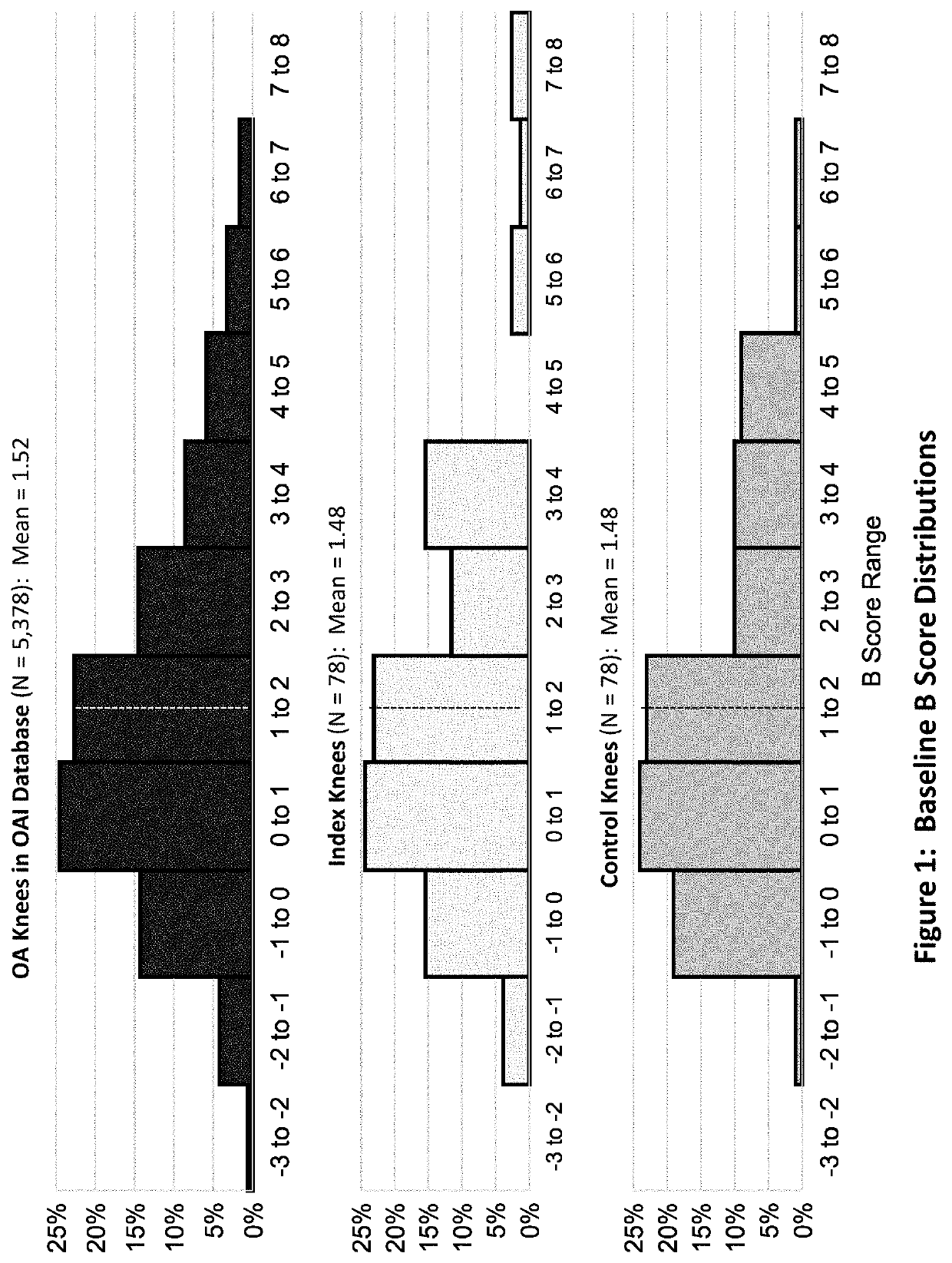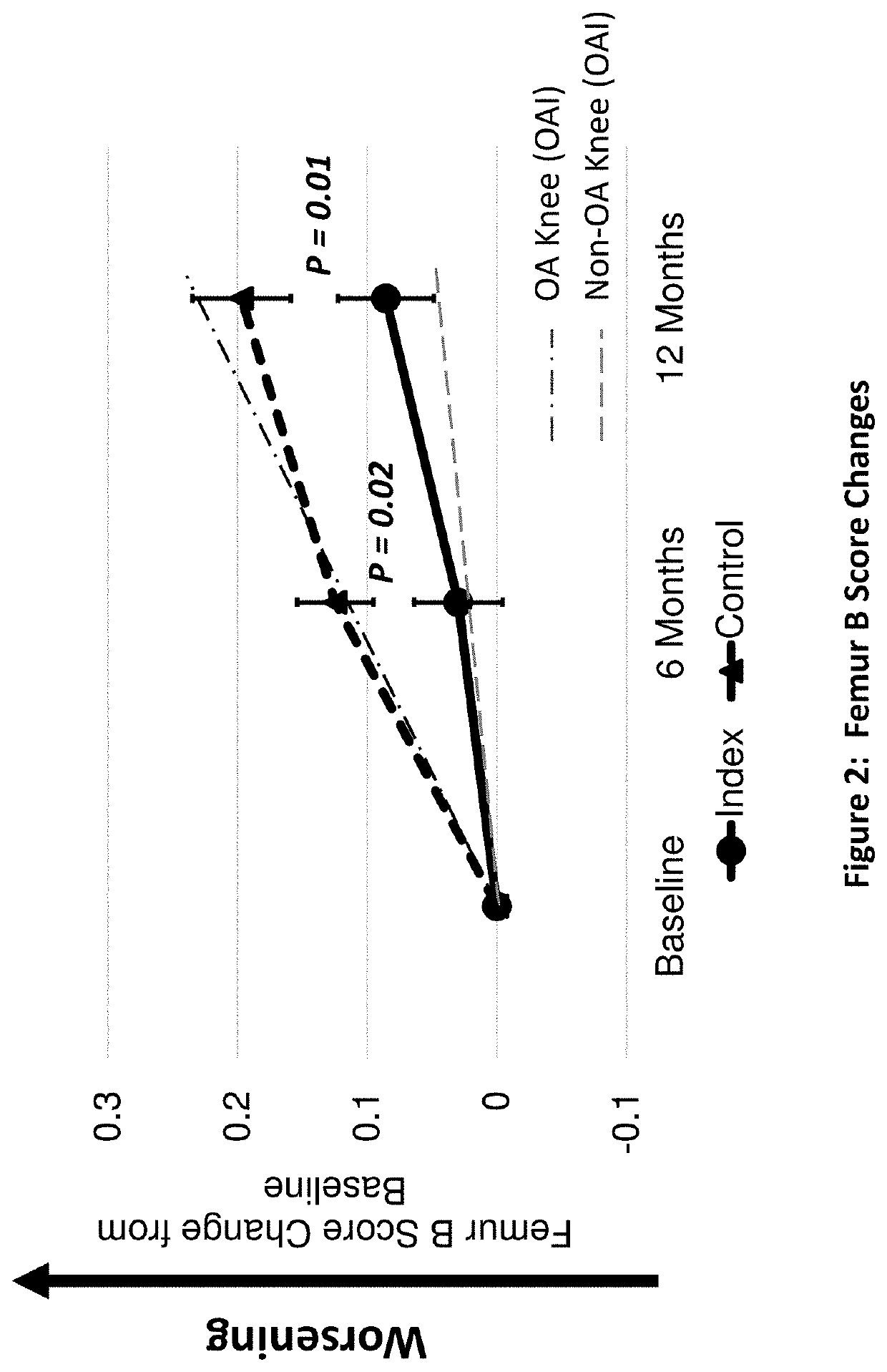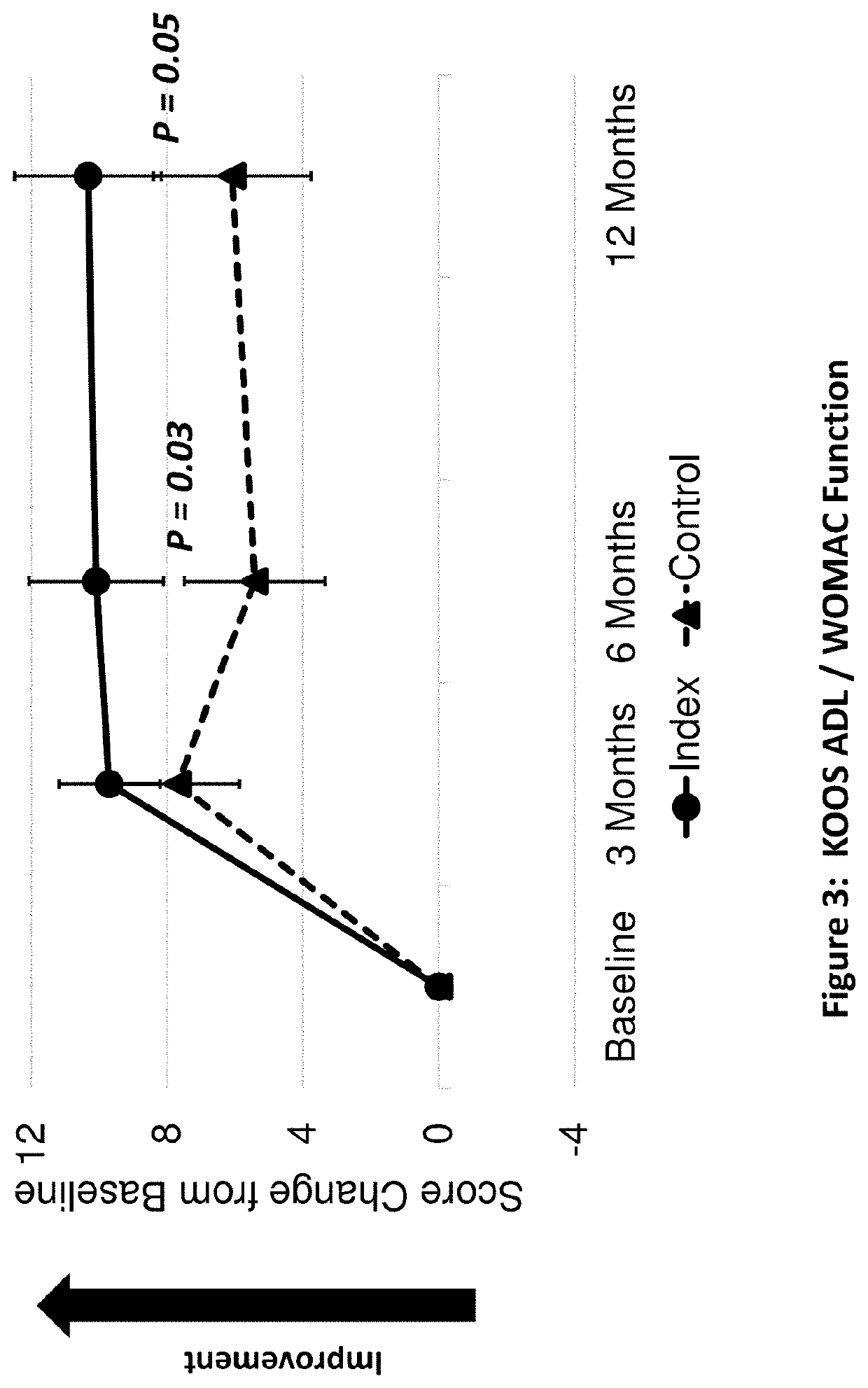Method to Identify Responders to Osteoarthritis Therapeutics
a technology for osteoarthritis and responders, applied in the field of diagnostics and methods of treatment particularly with osteoarthritis patients, can solve the problems of many clinicians reluctant to use this treatment modality, trials have failed to demonstrate a clinically meaningful treatment effect, and the mechanical stability of fibrocartilage is less
- Summary
- Abstract
- Description
- Claims
- Application Information
AI Technical Summary
Benefits of technology
Problems solved by technology
Method used
Image
Examples
example 1
Clinical and Structural Efficacies of a Peptide that Binds to Integrins on Bone and Cartilage Cells
[0226]Clinical Study Methodology
[0227]Outline of the Study
[0228]A peptide of SEQ ID No: 10 was tested for its clinical safety as well as clinical and structural efficacies in mild to severe knee OA patients.
[0229]A multicenter, randomized double-blind, placebo-controlled study was designed to investigate the safety, tolerability, pharmacokinetics, and efficacy of the peptide of SEQ ID No: 10 administered in four weekly doses in subjects with bilateral knee osteoarthritis. The study was conducted under an open IND (investigational new drug application) at CDER (Center for Drug Evaluation and Research) of the U.S. FDA (The United States Food and Drug Administration) in compliance with GCP (Good Clinical Practice) and ICH (International Conference on Harmonization of Technical Requirements for Registration of Pharmaceuticals for Human Use) guidelines. Eighteen (18) orthopedic, rheumatolog...
PUM
| Property | Measurement | Unit |
|---|---|---|
| time | aaaaa | aaaaa |
| time | aaaaa | aaaaa |
| shape | aaaaa | aaaaa |
Abstract
Description
Claims
Application Information
 Login to View More
Login to View More - R&D
- Intellectual Property
- Life Sciences
- Materials
- Tech Scout
- Unparalleled Data Quality
- Higher Quality Content
- 60% Fewer Hallucinations
Browse by: Latest US Patents, China's latest patents, Technical Efficacy Thesaurus, Application Domain, Technology Topic, Popular Technical Reports.
© 2025 PatSnap. All rights reserved.Legal|Privacy policy|Modern Slavery Act Transparency Statement|Sitemap|About US| Contact US: help@patsnap.com



